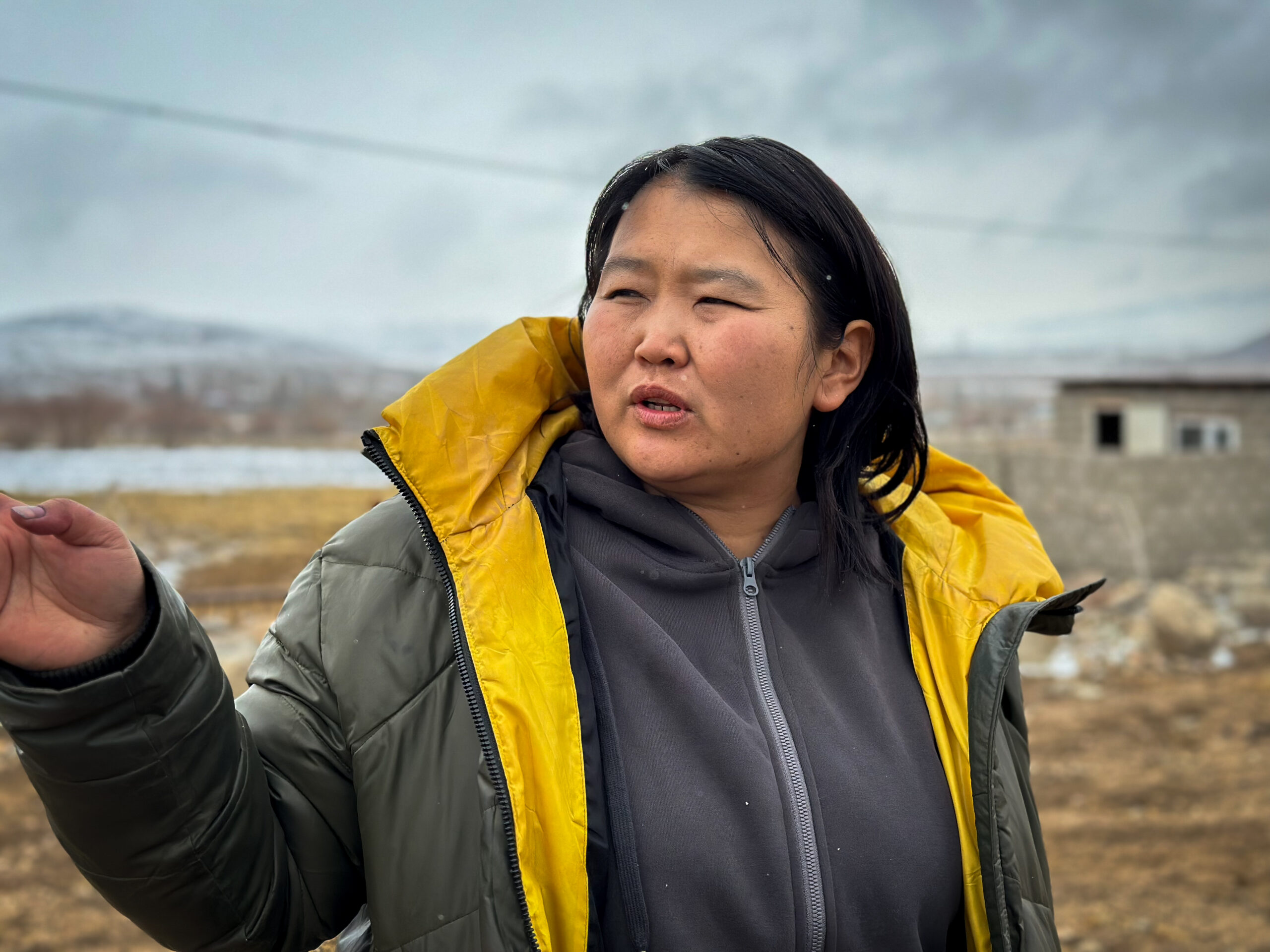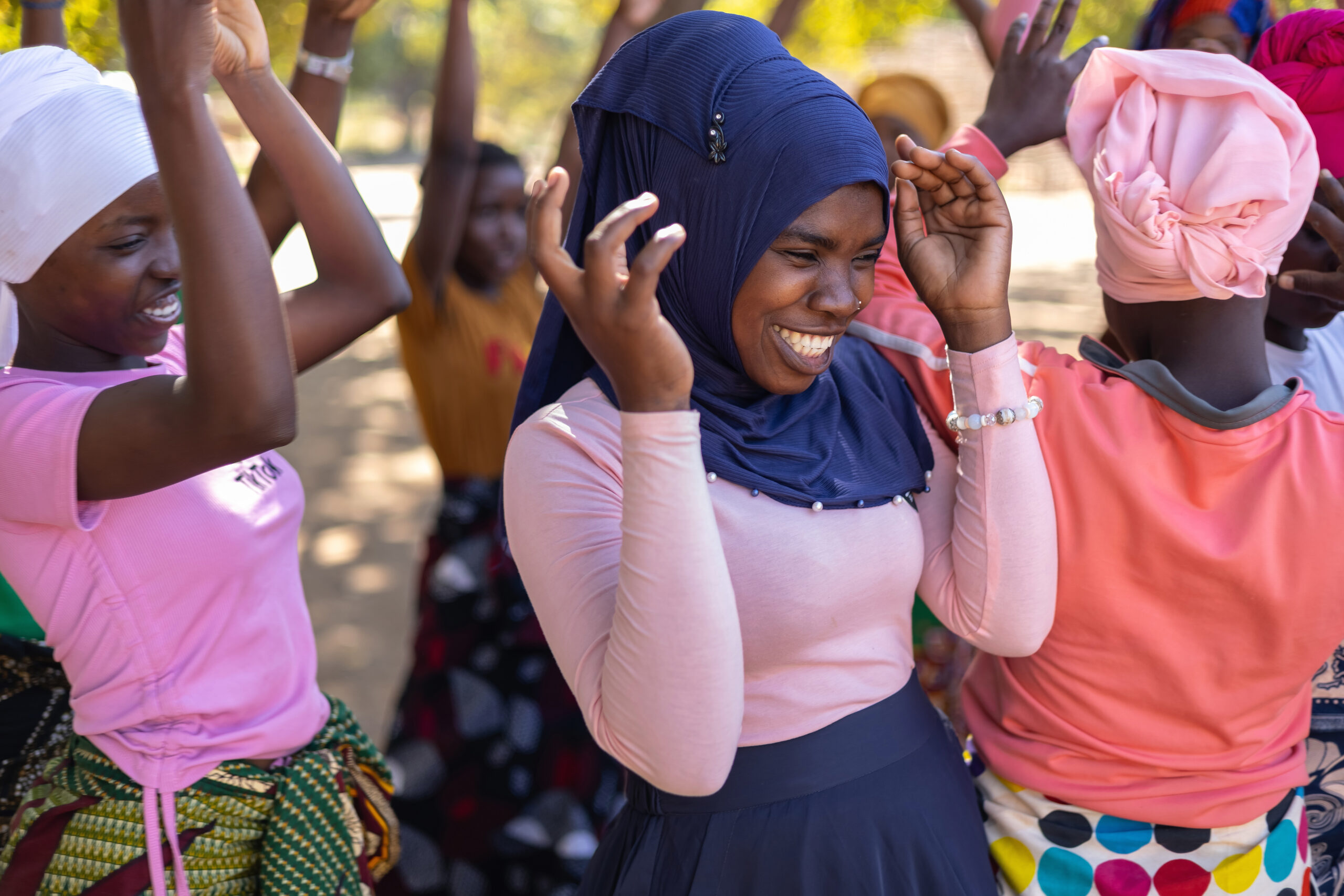Faced with looming water shortages, residents in the Kyrgyz Republic are addressing the issue head on – and in unique and varied ways. Supported by AKF and USAID’s Local Impact project, three eco-innovators have developed alternative approaches to water management to support their communities and build climate resilience.
Using wool to make the Kyrgyz Republic “a green society, a green country”
For Aida Adrahmanova, a former teacher and current “Green Champion” in the Kochkor district of Naryn, water resilience comes in the form of an environmentally friendly fertiliser: small, hard granules produced from discarded sheep’s wool.
A traditionally agrarian society, and where more than half of the Kyrgyz Republic’s land area serves as pastures for its about 1.7 million cattle and 6.3 million sheep and goats, there are no shortages of wool.
When Aida saw her neighbours burning the fleece to get rid of it, she questioned if there might be a more useful afterlife for this material – and a better way to clean up the streets. After discovering videos online of people making bio-fertiliser from this waste-product, Aida was intrigued. “I decided to try it out,” she reflects, “and now we’re here.”
More than half of the Kyrgyz republic’s land area serves as pastures for its about 1.7 million cattle and 6.3 million sheep and goats
With the support of AKF and USAID’s Local Impact project, Aida is said to be one of the first people in the Kyrgyz Republic to develop environmentally-friendly fertiliser from this method – and with positive outcomes for soil, produce and water.
“There are three factors to these granules; the first one is water. In summertime, farmers are facing major challenges because of water scarcity, and they’re not able to water their crops enough. But these granules come in handy because they keep moist and retain water,” says Aida.



They also hold nitrogen, phosphorous and potassium – all important nutrients to revitalise exhausted soil and grow healthy plants and produce. The third factor, Aida continues, is that the granules “soften and aerate the soil when they expand after contact with water.”
After being sent for testing in a Bishkek laboratory, Aida received optimistic results for her granules, providing scientific evidence for farmers who have expressed doubt over the effectiveness of her bio-fertilisers.
“I was so relieved. I had belief in myself – when I was promoting this product to farmers, I kept saying that this is really good for the soil, and now I have evidence. I can now say with confidence that this product is good,” she says.
With water shortages on the rise, and with many communities already experiencing challenges, Aida believes her bio-fertiliser can have a transformative impact. “This product is relevant – it’s a good opportunity to export wool too, in the form of these granules, and they can contribute to Kyrgyzstan becoming a green society, a green country.”
“I was so relieved. I had belief in myself – when I was promoting this product to farmers, I kept saying that this is really good for the soil, and now I have evidence.”
Aida Adrahmanova
“The future of agriculture is in drip irrigation”
With 94% of Kyrgyz territory made up of mountains, rugged and uneven terrain permeates the landscape and makes efficient water management challenging. Yet where traditional ditch irrigation methods see the uneven distribution of water and its loss via sloping land, the implementation of drip irrigation systems on local farms is a game changing solution.
Madymarov Bekbolot, a Kyrgyz “Green Champion” who designs drip irrigation systems with his colleague Elchibekov Aibek, says that these systems “help optimise water consumption and increase crop yields”.
Consisting of a network of tubes with micro-holes or droppers, drip irrigation supplies water directly to plant roots and minimises water loss by preventing evaporation and runoff, and optimising water uptake by plant roots. “This allows farmers,” Madymarov continues, “to significantly save water, increase yields, and reduce maintenance costs when compared to traditional irrigation methods.”

Since 1950, glaciers in the Kyrgyz Republic have shrunk by an average of 20%. Now, as the country faces increasing periods of drought, unpredictable rainfall and glacier melt, the efficient use of water resources is critical, as are social and technical adaptations to changing climatic conditions and growing water shortages.
“Many see the future of agriculture in drip irrigation and are ready to implement it on their plots,” says Madymarov. “However, to increase the use of drip irrigation, support from government, educational programmes and industry is needed to provide farmers with access to the necessary technical support and training to use these systems.”
Since 1950, glaciers in the Kyrgyz Republic have shrunk by an average of 20%.
Aware that many farmers face financial limitations, Madymarov and Elchibekov are also working on ways to reduce the costs of their systems, such as simplifying the design and making filtration more affordable, without losing any of its efficiency. In addition, they’ve created pre-assembled filtration systems that are easy to install and maintain, reducing implementation complexity and risk for farmers – especially those with small plots.
Working with local authorities, financial support programmes have similarly made the adoption of drip irrigation more accessible. This approach has accelerated the scaling-up of drip irrigation in the Kyrgyz Republic – contributing, too, to agricultural growth and development in the country, increasing productivity, and helping to improve the living conditions of residents.


While the implementation of drip irrigation systems is the primary focus of Madymarov and Elchibekov’s work, nurturing awareness and greater understanding of the importance of such systems, and pursuing collaborative relationships amongst and between communities, local organisations and authorities, is also key.
And for Madymarov, carrying out educational programmes and awareness campaigns among farmers and other stakeholders is necessary “to create an enabling environment” for the accelerated implementation of drip irrigation across the Kyrgyz Republic.
Learn more about drip irrigation at The Learning Hub by the Aga Khan Foundation.




